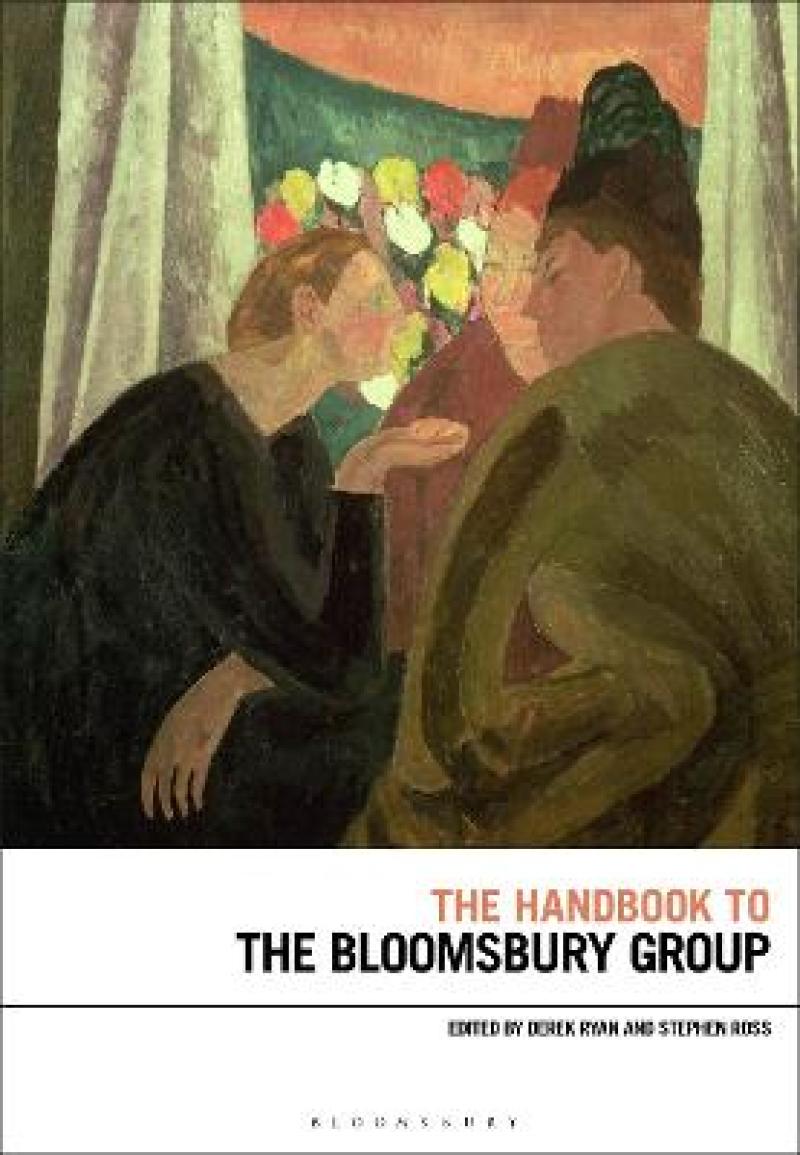The Handbook to the Bloomsbury Group is the most comprehensive available survey of contemporary scholarship on the Bloomsbury Group – the set of influential writers, artists and thinkers whose members included Virginia Woolf, Leonard Woolf, E.M. Forster, John Maynard Keynes, Vanessa Bell, Clive Bell, Duncan Grant and David Garnett. With chapters written by world leading scholars in the field, the book explores novel avenues of thinking about these pivotal figures and how their works are opened up by the new modernist studies. It brings together overview essays with detailed illustrative case studies, and covers topics as diverse as feminism, sexuality, empire, philosophy, class, nature and the arts. Setting the agenda for future study of Bloomsbury, this is an essential resource for scholars of 20th-century modernist culture.
Les mer
List of Contributors
Introduction
Derek Ryan (University of Kent, UK) and Stephen Ross (University of Victoria, Canada)
1. Bloomsbury and Sexuality
Todd Avery (University of Massachusetts Lowell, USA)
Case Study: Edward Carpenter's Radical Integrity and its Influence on E. M. Forster
Jesse Wolfe (California State University, Stanislaus, USA)
2. Bloomsbury and the Arts
Maggie Humm (University of East London, UK)
Case Study: Clive Bell and the Legacies of Significant Form
Mark Hussey (Pace University, USA)
3. Bloomsbury and Empire
Sonita Sarker (Macalester College, USA)
Case Study: Race, Empire and Performative Activism in Late Edwardian Bloomsbury
Anna Snaith (King's College London, UK)
4. Bloomsbury and Feminism
Lauren Elkin (Independent scholar)
Case Study: Bloomsury, the Hogarth Press and Feminist Organisations
Claire Battershill (Simon Fraser University, Canada)
5. Bloomsbury and Philosophy
Benjamin Hagen (University of South Dakota, USA)
Case Study: Bloomsbury, Mulk Raj Anand and Henri Bergson
Laci Mattison (Florida Gulf Coast University, USA)
6. Bloomsbury and Class
Kathryn Simpson (Independent scholar)
Case Study: Bloomsbury's Rural Cross-Class Encounters
Clara Jones (King's College London, UK)
7. Bloomsbury and Jewishness
Susan Wegener (Purdue University, USA)
Case Study: Leonard Woolf and John Maynard Keynes: Palestine, Zionism and the State of Israel
Steven Putzel (Pennsylvania State University, Wilkes-Barre, USA)
8. Bloomsbury and Nature
Peter Adkins (University of Kent, UK)
Case Study: Eating Animals and the Aesthetics of Meat in Virginia Woolf's The Years
Vicki Tromanhauser (State University of New York, New Paltz, USA)
9. Bloomsbury and Politics
David Ayers (University of Kent, UK)
Case Study: From Bolshevism to Bloomsbury: The Garnett Translations and Russian Politics in England
Michaela Bronstein (Stanford University, USA)
10. Bloomsbury and War
J. Ashley Foster (California State University, Fresno, USA)
Case Study: Bloomsbury's Pacifist Aesthetics: Woolf, Keynes, Rodker
Jane Goldman (University of Glasgow, UK)
Index
Les mer
Bloomsbury is everywhere: books, films, plays, even anime. Indeed, has any other group of friends had a more potent influence on the 20th-century ethos? Ryan (Univ. of Kent, UK) and Ross (Univ. of Victoria, Canada) demonstrate that the influence extends into the 21st century too, in essays covering sexuality, the arts, empire, feminism, philosophy, class, Jewishness, nature, politics, and war. Each essay is followed by a case study. Some essays (those on sexuality, class, the arts, and philosophy) reiterate well-established contentions; others force a new reckoning of the interconnectedness between the members and the pervasiveness, both positive and negative, of the group’s influence. The essays in this latter group are provocative and sometimes antagonistic, so they will be terrifically exciting for Bloomsbury scholars. Most fascinating are the essays devoted to the men of Bloomsbury, who were often relegated to the darkness in relation to Virginia Woolf and Vanessa Bell. This collection reminds one that the reverberations of Bloomsbury are still felt in every aspect of modern society, from the arts (including literature, painting, textiles, pottery, and museum acquisitions) to politics and economics, and even social policy. Summing Up: Essential.
Les mer
With chapters written by the world's leading scholars in their fields, this is a comprehensive survey of current and future scholarship on the Bloomsbury Group – from Virginia Woolf and E.M. Forster to John Maynard Keynes and Clive and Vanessa Bell.
Les mer
The definitive handbook to contemporary scholarship on the Bloomsbury Group, from Virginia Woolf and E.M. Forster to J.M. Keynes
Bloomsbury Handbooks is a series of single-volume reference works which map the parameters of a discipline or sub-discipline and present the 'state-of-the-art' in terms of research. Each Handbook offers a systematic and structured range of specially commissioned essays reflecting on the history, methodologies, research methods, current debates and future of a particular field of research. Bloomsbury Handbooks provide researchers and graduate students with both cutting-edge perspectives on perennial questions and authoritative overviews of the history of research.
Les mer
Produktdetaljer
ISBN
9781350143654
Publisert
2020-06-25
Utgiver
Vendor
Bloomsbury Academic
Vekt
570 gr
Høyde
244 mm
Bredde
169 mm
Aldersnivå
U, 05
Språk
Product language
Engelsk
Format
Product format
Heftet
Antall sider
328
